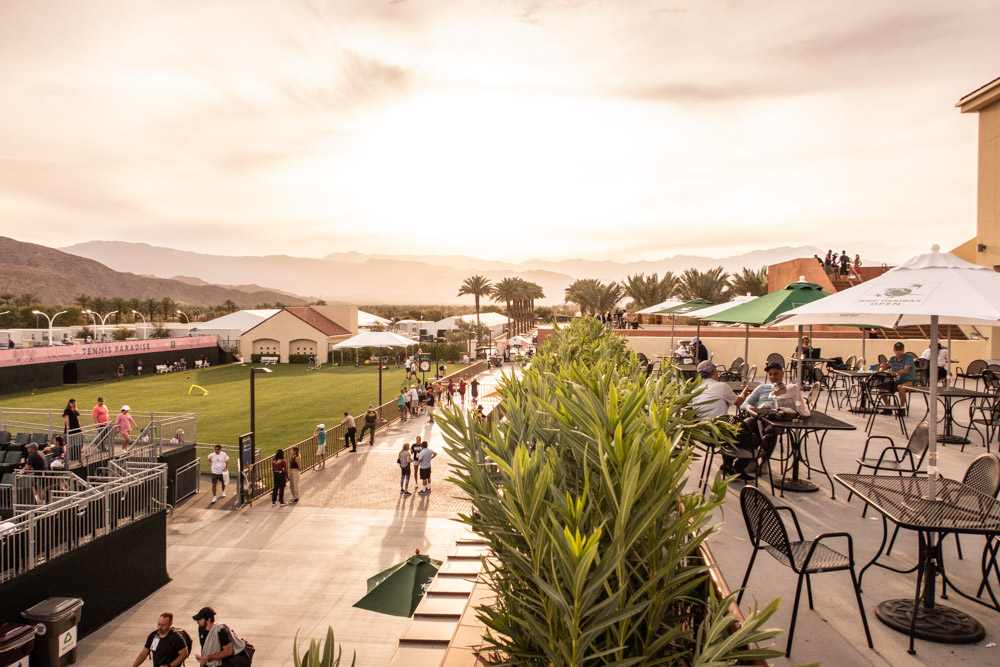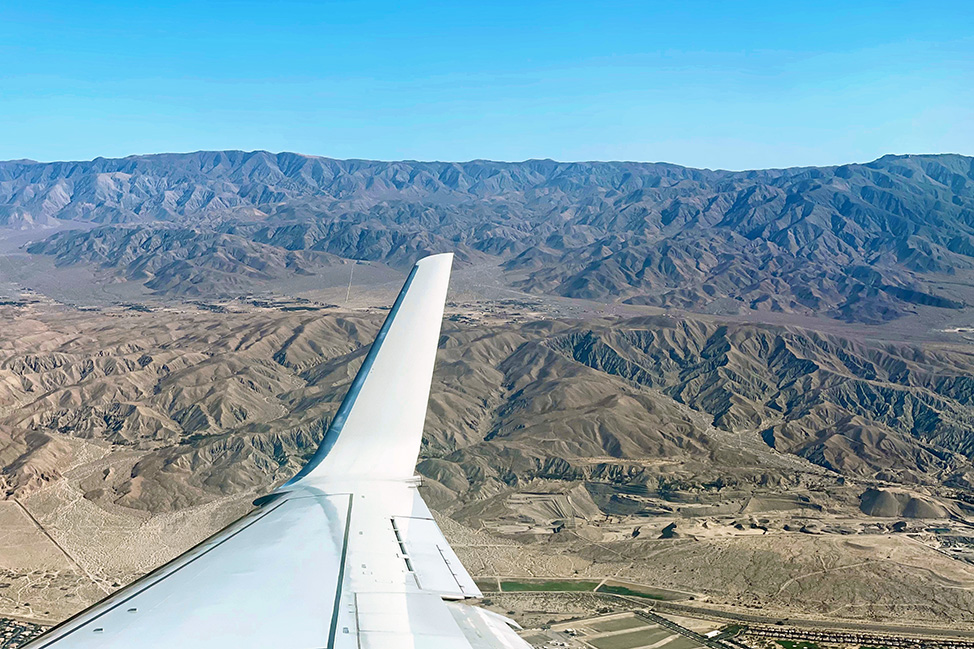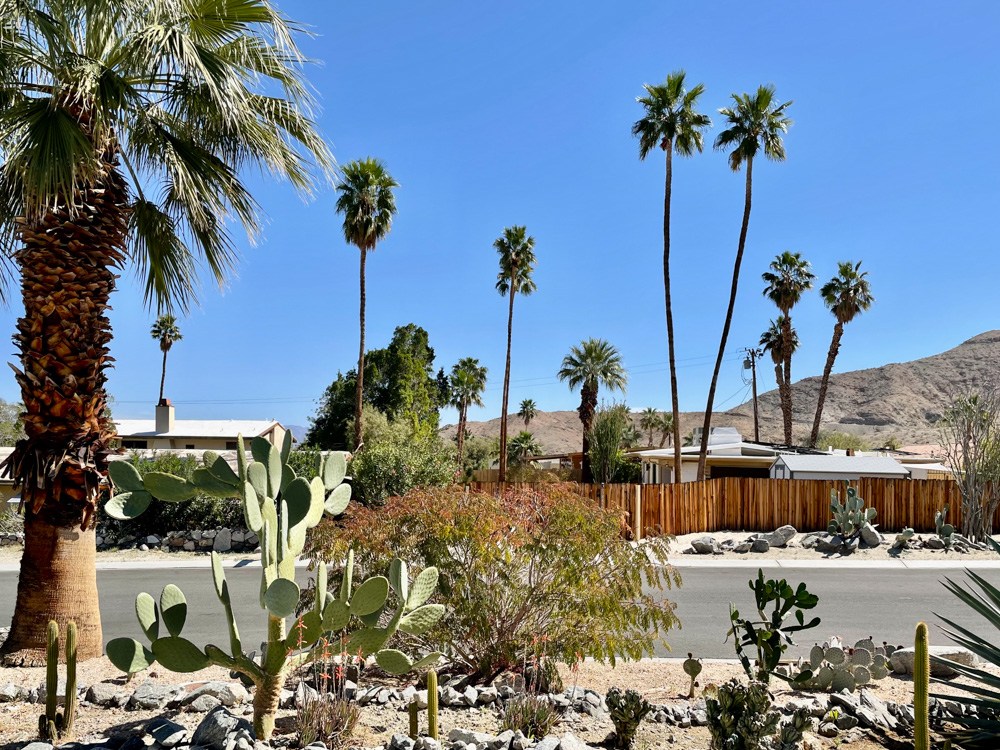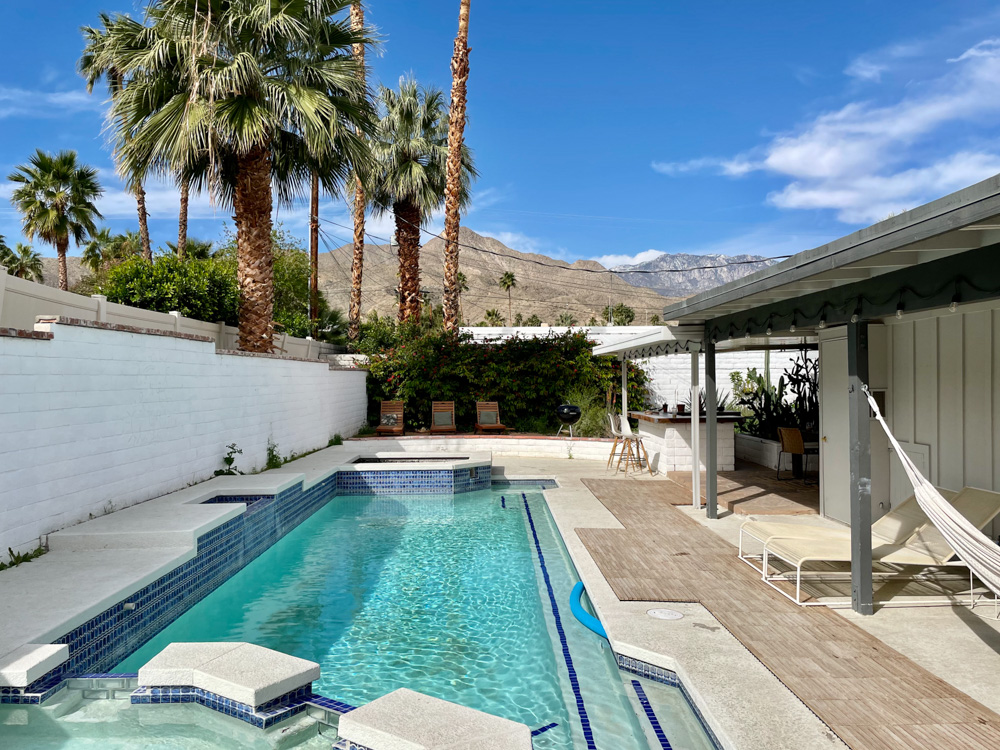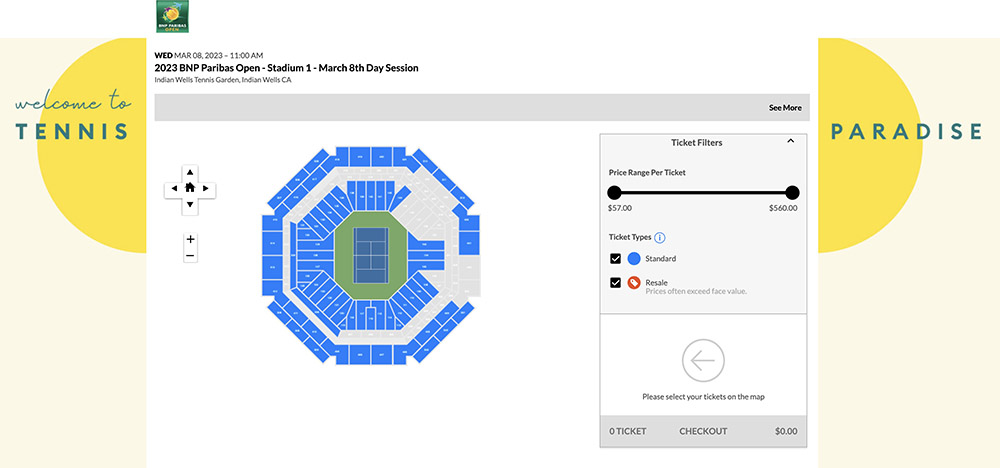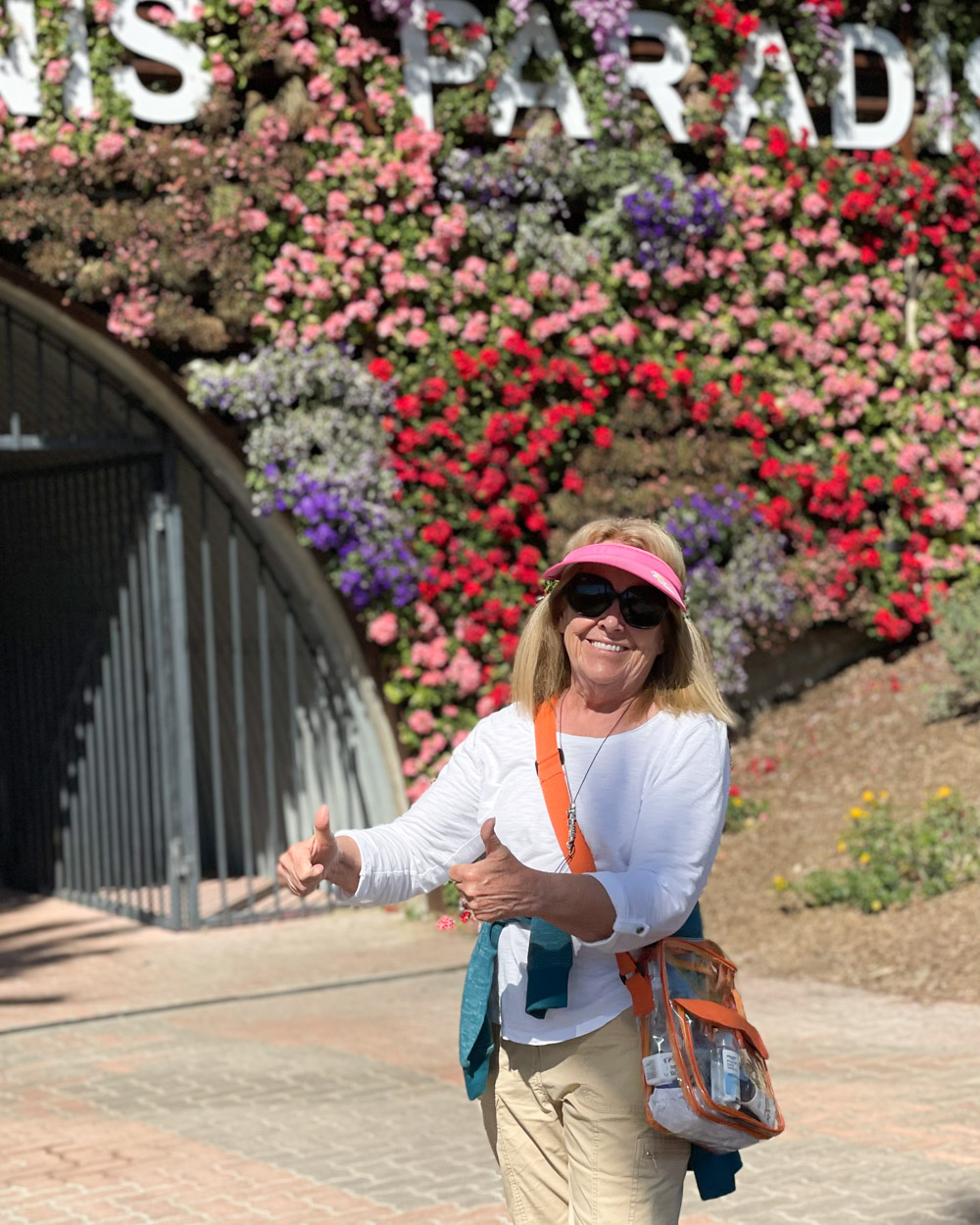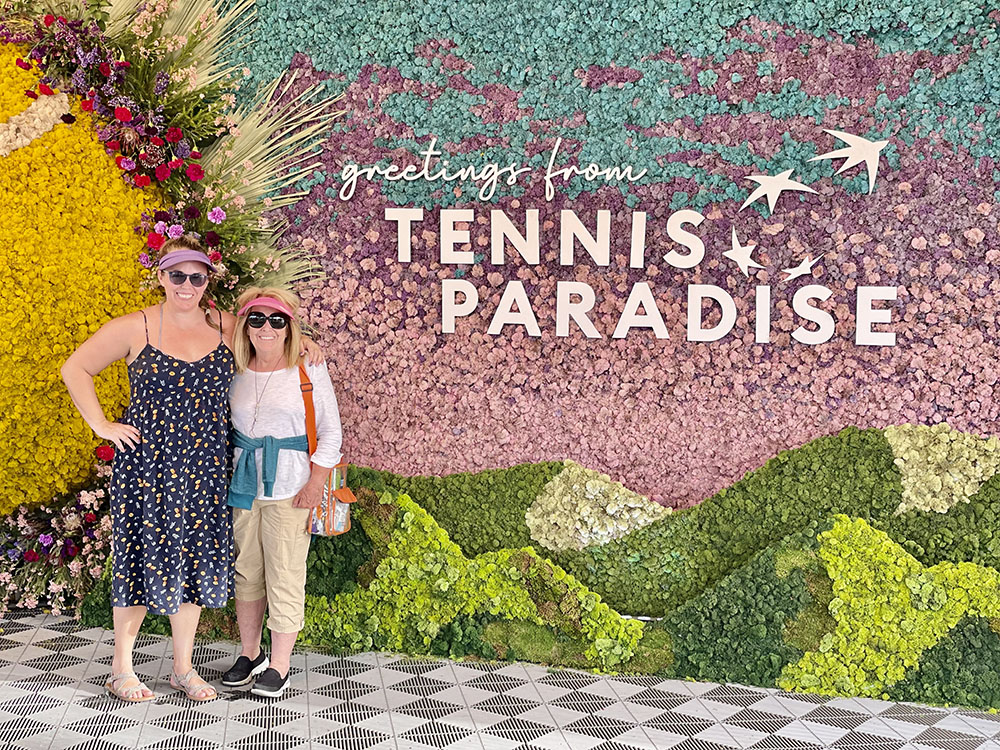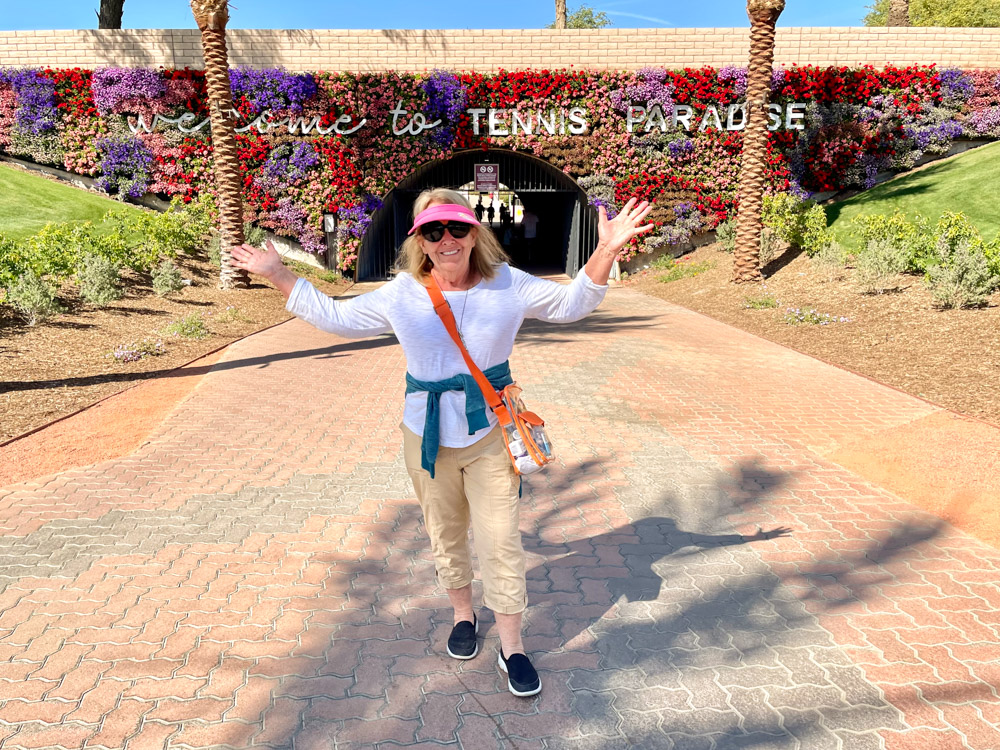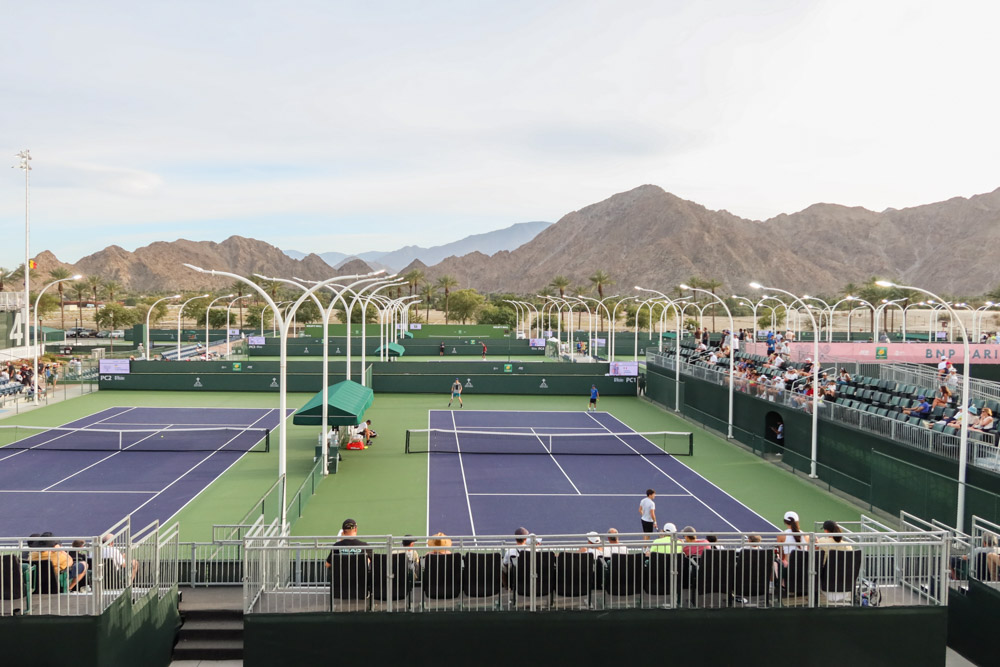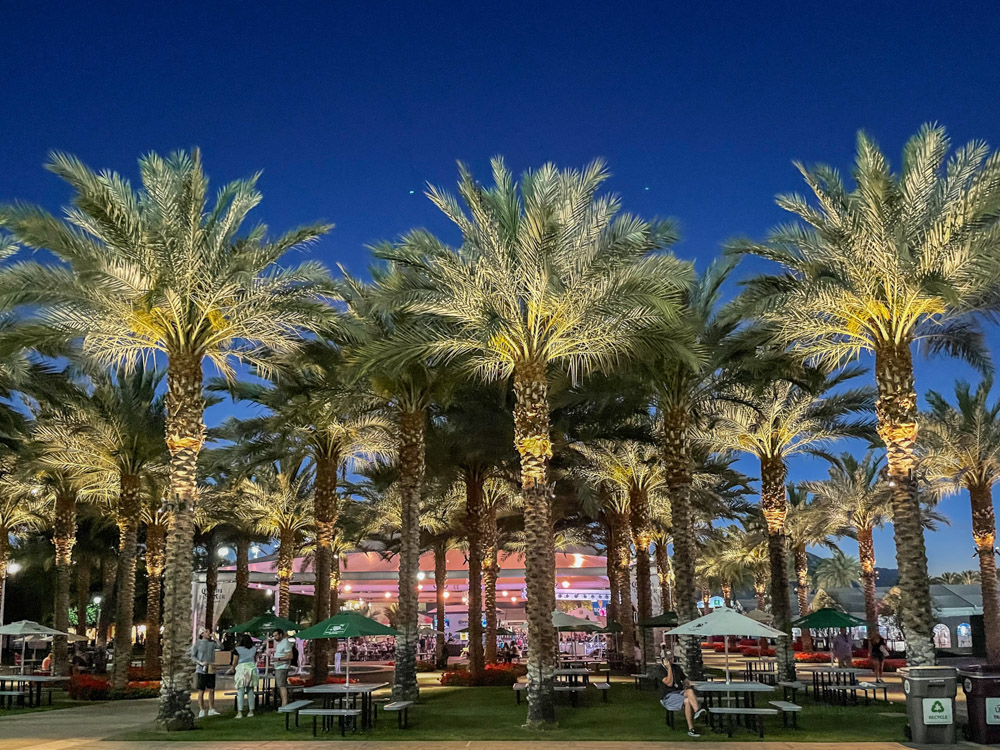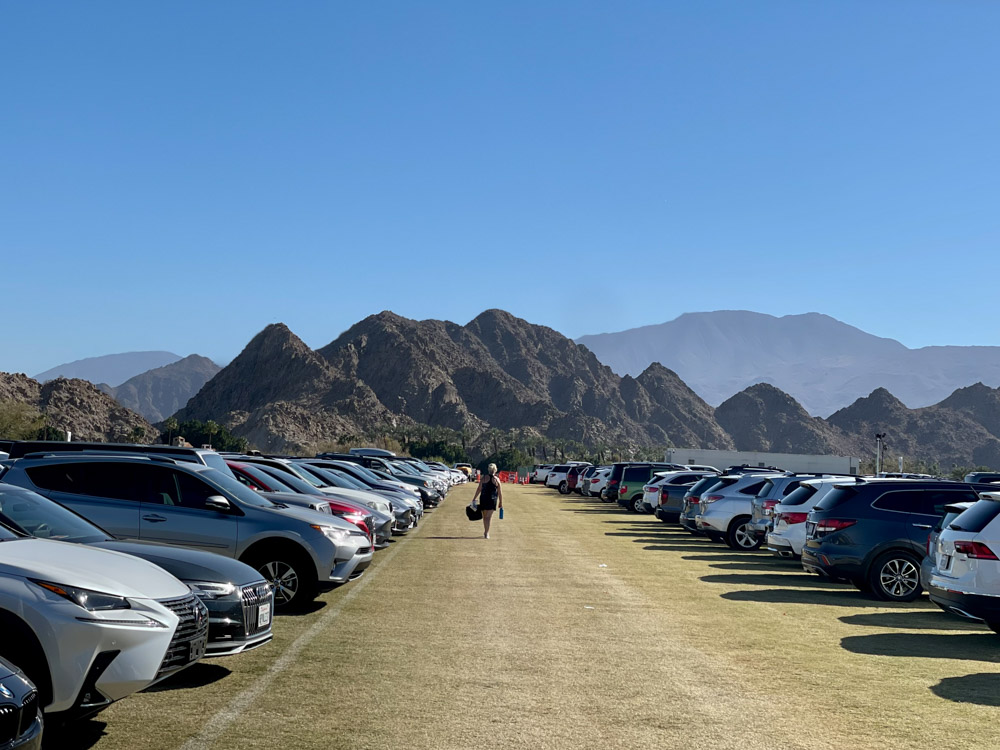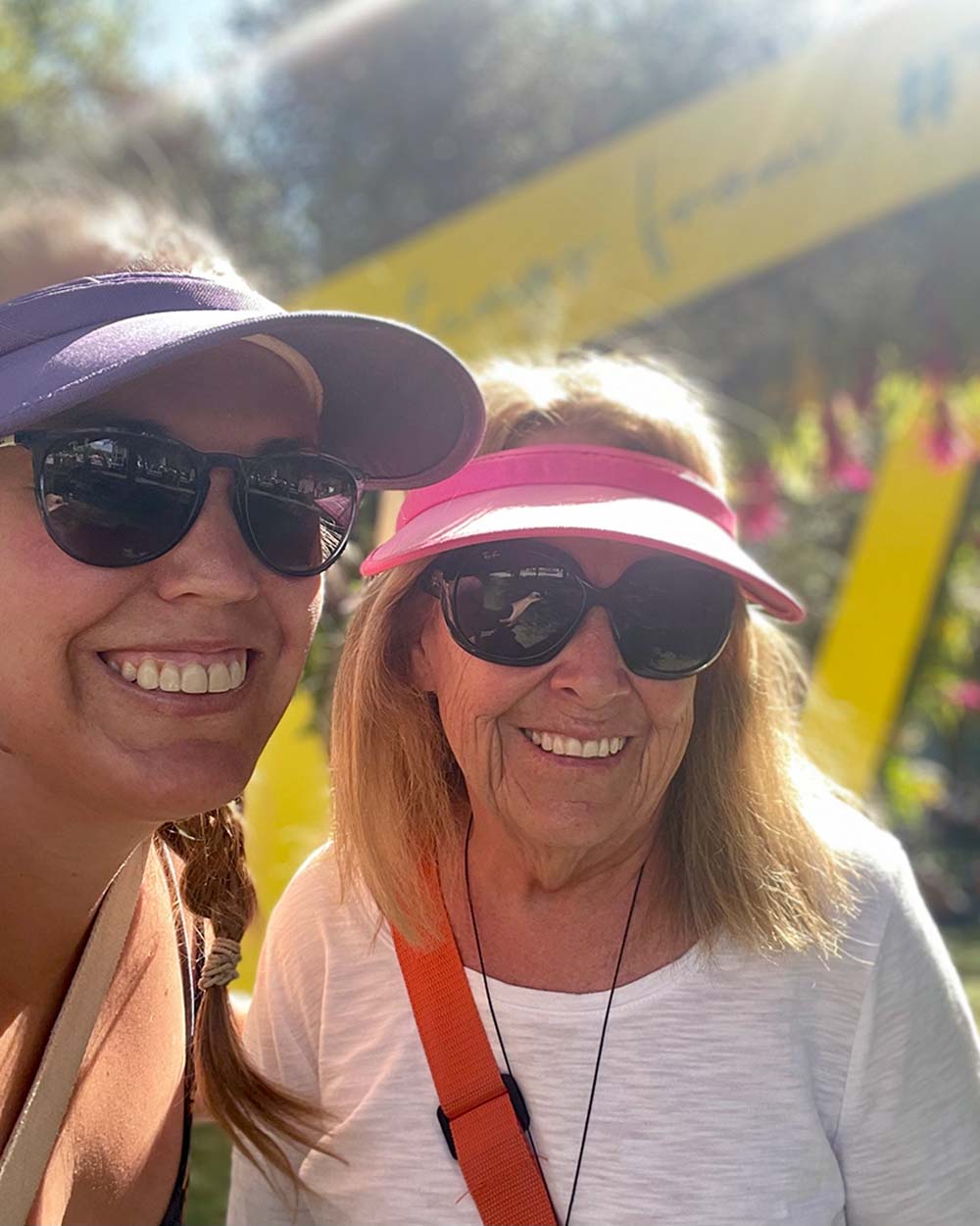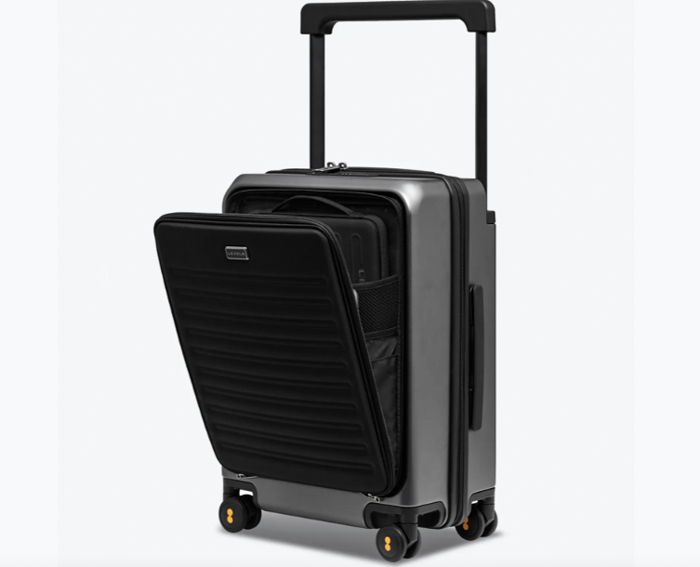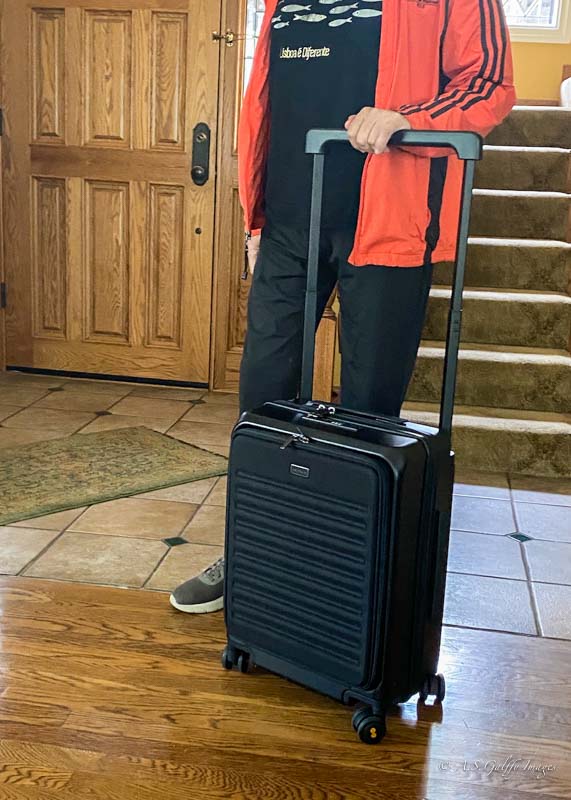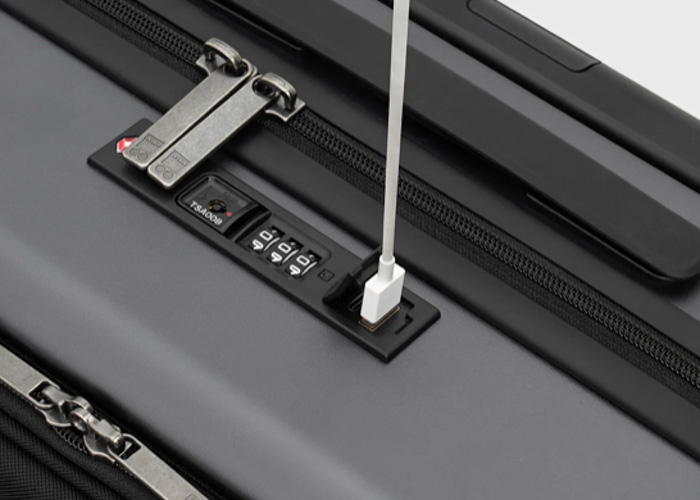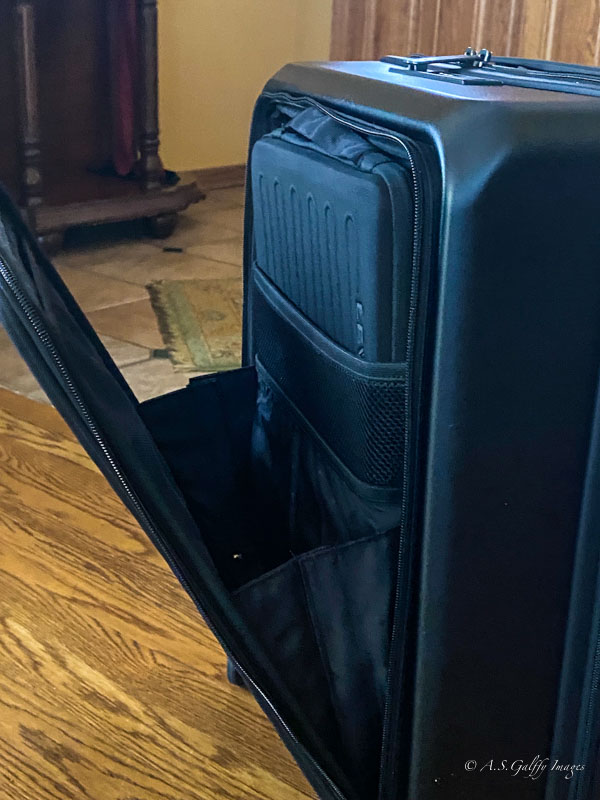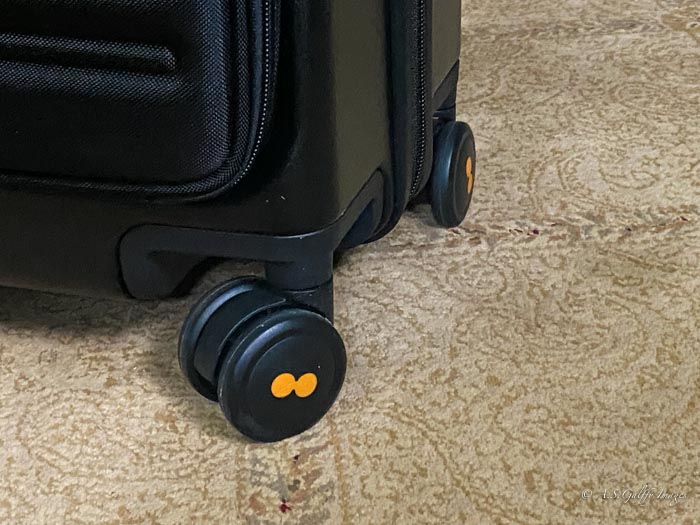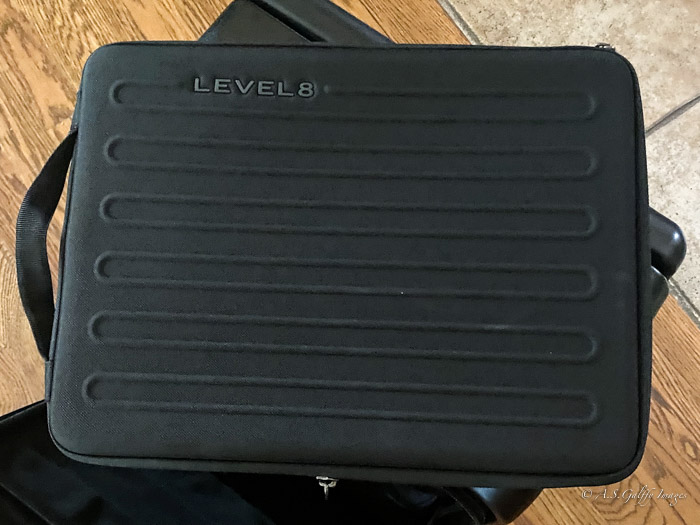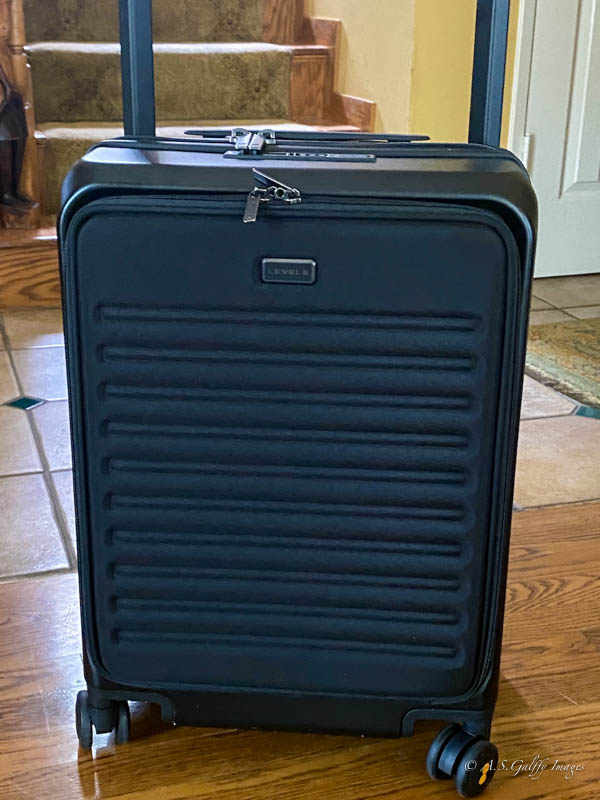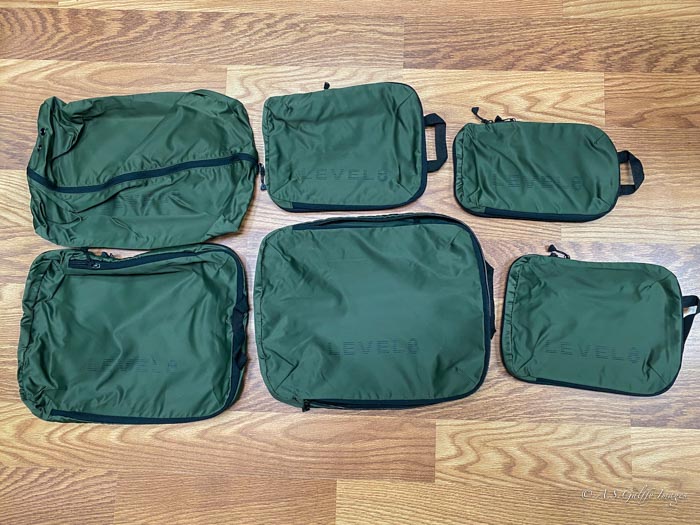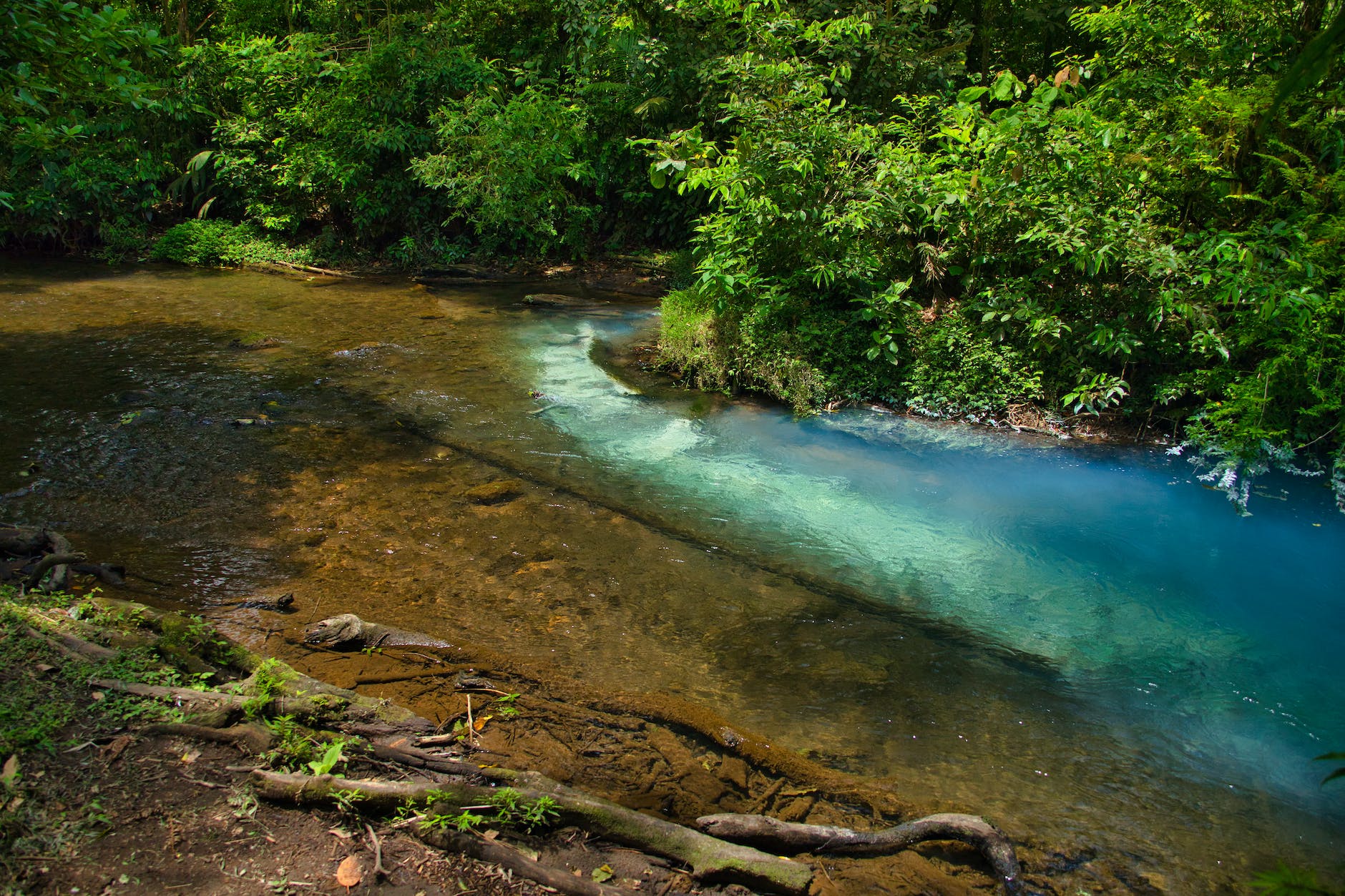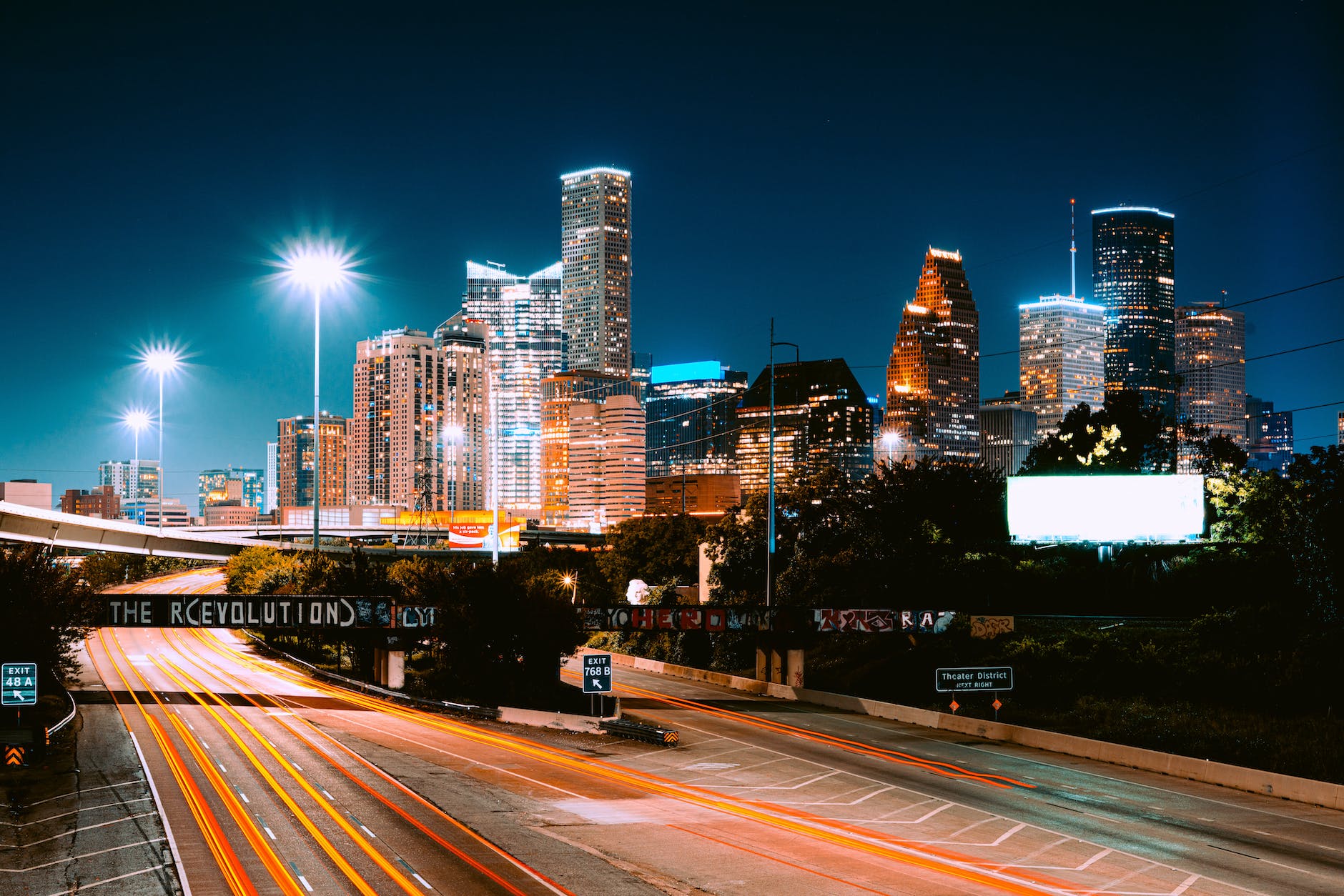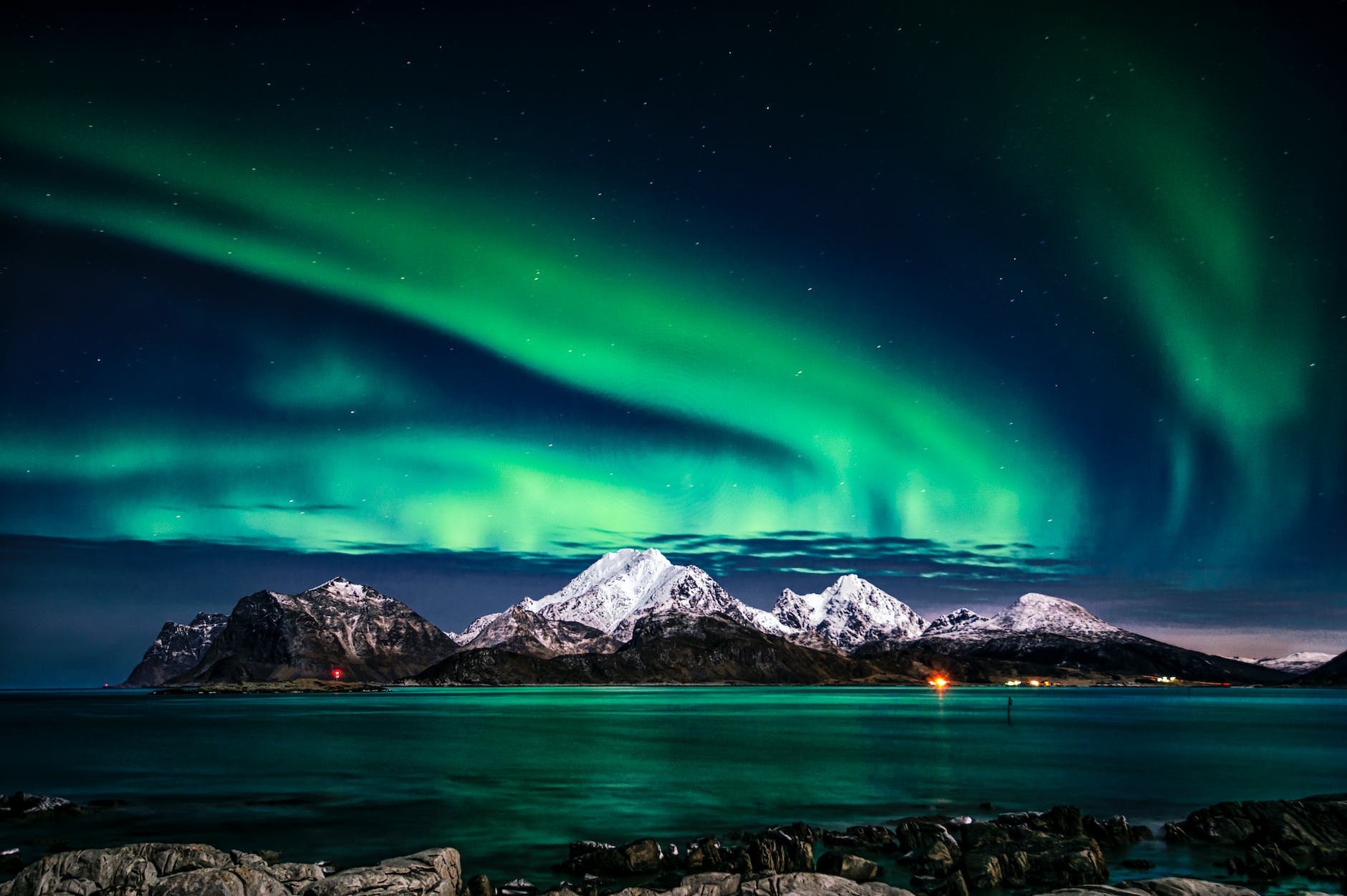When my mom and I were planning a trip to Indian Wells, one of the major tennis tournaments, a couple years back, I had so many questions. What sessions should we buy? Where should we stay? And how many days on site is enough? This is California, after all; we’ll likely want to see more of the Palm Springs area beyond tennis, right?
This post was last updated in March 2025.
And with the latest BNP Paribas Open underway from now through March 16, let’s talk all thinks Indian Wells.
About the “fifth Slam”
Though Indian Wells is not one of the four grand slams—which, in order, are the Australian Open, Roland-Garros, Wimbledon and the U.S. Open—it’s one of the biggest master events. The fifth-most attended tournament after the slams boasts the second-largest permanent tennis stadium in the world after Arthur Ashe in New York, and all your favorite pro tennis players will be there assuming they aren’t sidelined with an injury.
In fact, it’s a mandatory WTA 1000 and ATP Masters 1000 event, and the player field includes the top 75 male and female players in the world, as well as wild cards and qualifiers. It’s also in a stunning setting referred to as “the Garden,” sheltered between desert and mountains.
As a former tennis player on the USTA circuit and a big fan in my adult years, I took copious notes during our five days at BNP Paribas Open in Indian Wells in hopes it’s easier for you to plan your own trip to one of the most prestigious tournaments in pro tennis. Even if you’re a fair-weather fan, you’ll love this event, I promise you.
How to get to Indian Wells
First things first: How do you even get to Indian Wells? Palm Springs International Airport (PSP) is just 15 miles west of the tennis garden and services many direct flights a day. I’ve flown into Palm Springs via Dallas on American Airlines, and I’ve also flown direct from Nashville to Palm Springs on Allegiant Airlines. If you’re flying internationally or don’t have an easy connection to PSP, you can arrive via any of the LA-area airports like LAX, rent a car and drive the two hours to the desert. In our case, it was cheaper to fly into Palm Springs.
You absolutely will need a rental car when you arrive, especially for getting out to and around Indian Wells. The desert area of Southern California is very spread out, and while ride-sharing does exist out there, it’s not the most reliable mode of transportation in the area. On my last two visits to Palm Springs—March of the two past years—I’ve rented a car and only taken an Uber if parking was going to be an issue.
Also worth noting is the Indian Wells tennis tournament falls during prime Spring Break season every year, so you’ll also be competing with families looking for a little late-winter sun. In other words, book your rental car as far out as you can when planning a future Palm Springs vacation, a lesson we learned the hard way when I spaced on booking a car and could not find a single vehicle for rent three weeks out. You can check rental car prices and availability for Expedia here or Discover Cars here.
Where to stay for Indian Wells
The Greater Palm Springs area spans nine cities—Palm Springs, Desert Hot Springs, Cathedral City, Rancho Mirage, Palm Desert, Indian Wells, La Quinta, Indio and Coachella—and it’s all positively stunning desert terrain, so it can be hard to figure out where to stay for Indian Wells. If I were going to the area simply to enjoy the food, dining and art, I would stay in Palm Springs, as we’ve done several times before.
However, traveling to Palm Springs for tennis is a different ball game. If you’re a mega-fan and plan to be on site from start time till well after dark each day, you’ll want to stay as close to the grounds as possible: in Indian Wells, Rancho Mirage or Indio. For our own Indian Wells experience last year, Mom and I booked a vacation rental in Cathedral City with a pool. It was great to kick it by the pool each morning before heading to the tennis center grounds each afternoon.
That 25-minute drive to and from Indian Wells, plus parking then walking to the courts, at the start and finish of each day got old quickly, though. If we were to do it again, I’d book much further out and snag a rental house in Indian Wells instead. It’s a good strategy for groups, too; if some individuals don’t want to stay as long as you do, they can easily Uber or Lyft back to your hotel or rental.
Hotels and rental houses can be pricey during the BNP Paribas Open, and we booked our rental about six months before when inventory was still high. Here are a few hotels in Indian Wells and rentals near the tennis garden where you might start with your lodging search:
How to pick seats at Indian Wells
By far the most annoying thing about Indian Wells was hacking the ticketing system. There are so many options, and while I’ve been to tennis Grand Slams, seating for every tennis tournament is different. When I first booked our seats at Indian Wells, I had no idea what sessions to book and whether I needed seats or not—and wound up wasting a lot of money. Hopefully, my errors helps others in the same situation. The short of it is: If you plan to watch the center court matches, you’ll need to book seats.
Grounds passes at Indian Wells
Grounds passes (from $30 to $60 a day) are available for day sessions only through the fourth round play, which goes March 2-12, 2025, and will allow you to stay at the Indian Wells Tennis Garden for the evening sessions, as well. Grounds passes do give you access to non-reserved seating for Stadiums 2 through 9 the entire day; that said, a good majority of night sessions take place on Court 1, so only having a grounds pass is not the best option if you want to see night matches.
Pro tip: If you’re on a tight budget, grounds passes for qualifying matches on the first three days—in 2025, that’s March 2, 3 and 4—are just $10.
Stadium 2 is included in the day session as well as the night session and many of the big players who aren’t assigned the main stadium will play their matches there. The only issue we found is that a lot of Stadium 2 is reserved, so seats can be tough to come by during big matches and on the opposite side of the stadium from the entrance. Also, Stadium 2 is half-shaded and half-direct sun in the height of afternoon, which can not only be brutally hot but also tough conditions for watching a match.
Access to the main court at Indian Wells
If you want access to the matches at the main court, Stadium 1, day or night, you must purchase a separate ticket, which is attached to a seat. We didn’t realize this in advance and found ourselves buying night tickets each day to ensure we saw the big matches.
Stadium 1 prices range dramatically from $60 in the earlier rounds into the thousands for the quarterfinals, semis and finals. On average, I’d say we spent around $175 per person for seats every time we booked a Stadium 1 ticket. This was often on top of what we had already spent for day session passes. A few times we sat in nosebleeds, and two nights we sprung for the lower bowl. The 400 levels are so high, it’s incredibly hard to follow the match, so I’d say if you’re going to spend the money, do so when you can get tickets in a 100 or 200 section.
Since they scan your tickets via the BNP Paribas app to get into Stadium 1, you will only be able to access the section for which you bought your ticket. In other words, no seat-creeping to move up to a vacant section.
For Stadium 1, there’s a Daily Double option where you can reserve the same seat for the entire day; this is the more economical option now that I realize how much extra we spent to see matches at Stadium 1 after already purchasing day grounds passes. Next time we go, I’ll go this route on the days when all of our favorite players are scheduled for the main court.
My biggest tip for booking tickets is to wait until the week you’re attending—even day of in some cases—so you know what matches you’ll want to see. We made a classic rookie move and booked all our tickets months out being afraid sessions would sell out, then wasted so much money on tickets we didn’t use once we arrived to the garden and realized we needed a separate ticket for some matches. We wound up springing for several nighttime sessions because my mom is tennis’ number one fan and wanted to see many of her favorites take the court.
Luckily, we were able to buy tickets day of on the app. We also stopped in the box office to buy some tickets in person, but that was a much lengthier experience. When possible, I recommend buying tickets through the app.
Buying the series packages
If you’re planning for next year, you could set your calendar for when tickets open in the fall and splash out on the series package instead, which gives you access to every match, every day on every court with an assigned seat. Series packages start at $800 for Loge or $1200 for Prime Loge, then start at $2,850 per person for a stadium box.
Honestly, with as much as we spent going four days and buying day sessions and night sessions a la carte, we will be going this route next time. Per the Indian Wells website, Series Packages patrons are able to sell or transfer their tickets for any individual session they are unable to attend, so this is ideal if you want to see a whole lot of tennis.
Note: Tennis is not a spectator sport for the budget traveler; that said, if you don’t care about seeing the biggest names in tennis, you can get away with just purchasing single day sessions and it will be much more affordable.
The food and drink at Indian Wells
We ate many meals on-site at the tennis garden, and they were fine, nothing impressive but they did the trick when we didn’t want to leave between matches. The lines were often long, and if you want to get into any of the handful of seated restaurants like Nobu, you need to get there early as they don’t do reservations, only walk-ins.
We also had quite a few drinks, which were limited to frozen margaritas and a limited selection of domestic beers. That said, if you go to the center of the garden, you’ll be able to buy more cocktails from whatever tournament sponsors have activations that year.
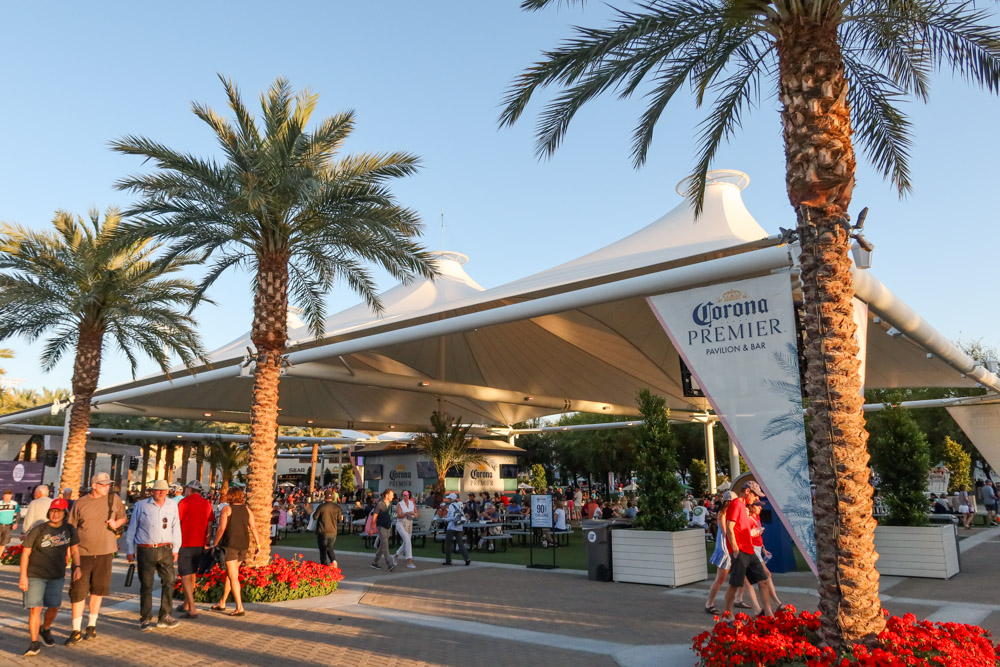
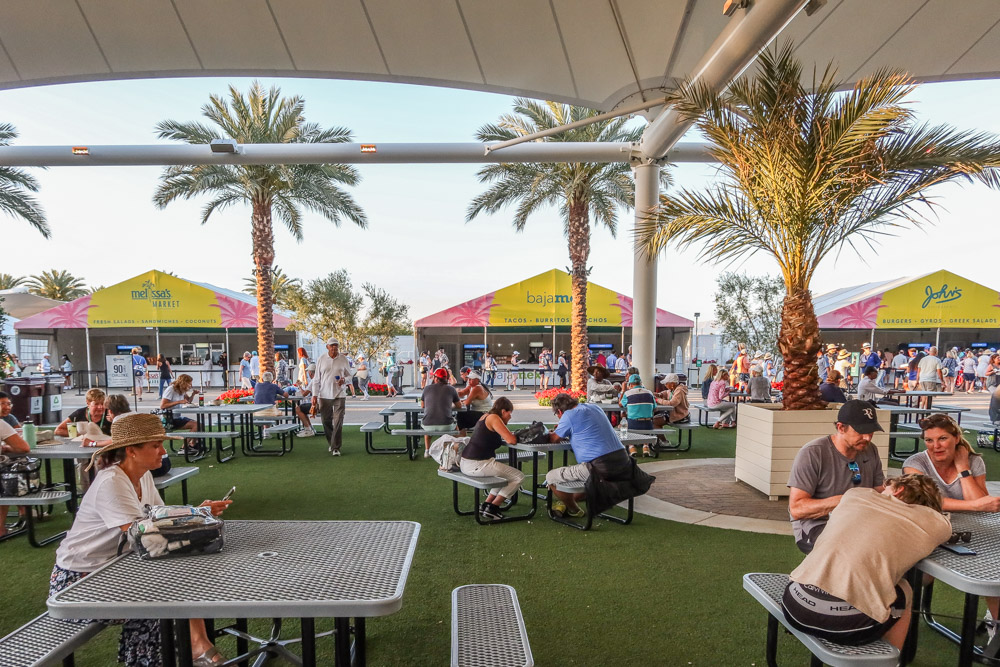
When is the best time to attend Indian Wells?
This is all personal opinion. Like any tennis tournament, I prefer attending right in the middle. We got into Palm Springs on a Saturday at the end of the first week and went to Indian Wells every day but one from Saturday through Wednesday and, as a result, saw second, third and fourth round matches for men’s and women’s, both singles and doubles.
While seeing the semifinals or finals would be awesome, my mom and I both agree that we love attending a tennis tournament right smack in the middle due to the sheer number of matches we get to see and the fact that we have a better chance of seeing all our favorites play.
Other things to know about attending Indian Wells
There’s a clear bag policy for larger bags. Like most sporting events, Indian Wells requires the use of clear bags. Since the weather changes dramatically in the desert and you likely will need a light jacket after the sun sets, I recommend buying a clear plastic backpack that’s the maximum size (12” x 6” x 12”) to use as a day bag for your time at the tennis tournament. You can also bring in a purse (does not have to be clear) so long as it isn’t larger than 4.5″ by 6.5″, and I use this clear belt bag (or fanny pack) often when I don’t feel like the added weight on my back.
Bring a hat or visor and sunscreen. No big surprise, but the sun in the desert is brutal. Even when the temperatures hover in 70, the direct sunlight beating down on you is court side. Be sure you put some sort of hat in your bag, lather up on sunscreen and plan on a touch-up every few hours. I’m a big fan of these visors and also have this visor in several colors.
Bring in your own water. The refreshment lines at Indian Wells were long, and it was rare we didn’t have to wait 10 minutes or more just to get water. Had I known you could bring in your own canister, I would have packed my S’well (and also cut back on single-use plastic in the process).
The grounds open at 10am every day. While the matches don’t start until 11am—and often, there weren’t any we wanted to see until 2 or 3—it was nicer being there early in the day when crowds were fewer and parking lots not as packed.
Make sure your phone is charged before you arrive. Everything at Indian Wells—tickets, food and drink sales, merch—is cashless. Because the service is so bad in the desert, this will very quickly drain your phone battery, and you’ll need your phone to check the app for updated match times, as well as to scan in and out. A few times, my phone died entirely and there’s virtually nowhere to charge it inside the grounds, so I’d recommend also packing a portable external charger in your purse or day bag, as well as a phone lanyard so you can keep your phone close but not have to worry about losing it.
Note where you parked. Be sure and drop a pin on your phone reminding you where you parked. The parking lot is massive, and it all looks the same (because, well, desert!). Make a note before you go in the grounds and take a photo of it to help as a visual reminder. And then also write it down in case your phone does die!
Would I go back to Indian Wells?
Absolutely. This was such a fun tennis tournament in the most magical setting. We got to see so many of our favorite players take the court—Coco Gauff, Emma Raducanu, Taylor Fritz, Rafael Nadal, Shelby Rogers, Jenson Brooksby, Maria Sakkari, Paula Badosa, Jack Sock, Caty McAnally, the list goes on—and I’ve rarely seen my mom happier. We just returned from the Australian Open and are slowly working our way through other WTA 1000 events, but I’m really hoping we can make a repeat trip to the Indian Wells tennis tournament in the years to come.


